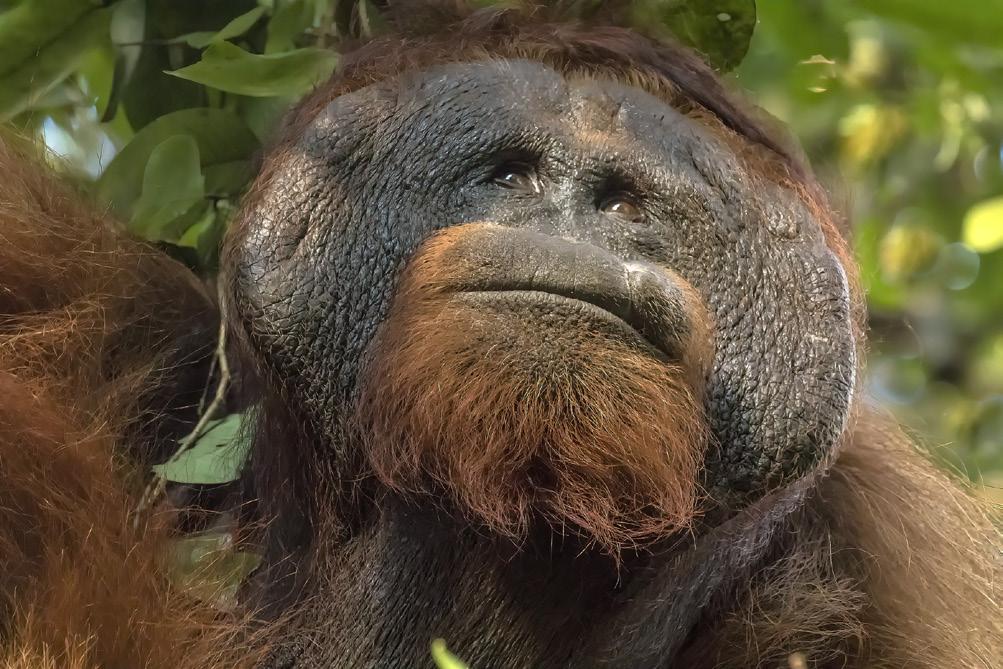
1 minute read
What’s wrong with this picture?
Look at this picture closely. Enlarge the page on your device and you can see that the eyes are not tack sharp. The autofocus locked onto the middle of the orangutan’s face -- that large upper lip -- and because the light level was low in the Borneo jungle and I used a 100-400mm lens for the shot, the depth of field wasn’t enough to cover the hair on the chin plus the eyes. I was shooting at f/11 because I was aware that this angle made it tough to get the kind of DOF I needed, but as it turned out, f/11 wasn’t enough.
The problem, though was the low light level. I was already at 6400 ISO. So, to gain more depth of field, I had two choices: I could either choose a smaller lens aperture which would force the ISO to be higher (I didn’t want to change the shutter speed of 1/250 for fear of blurring the orangutan), or I could have

zoomed back from the 286mm focal length composition you see here. It’s easier to analyze a picture in retrospect, but at the time these decisions have to be made in a second or two before the photo opportunity is lost.
I got one shot of the orang and then he moved away. I didn’t have time to analyze how I could improve the shot. So, in post-processing, I applied Topaz Sharpen AI. In the dialog box, I chose the ‘focus’ tab and that proved to be the best option. If you enlarge this page on your device and look at the eyes, they are significantly sharper than the original. It’s obviously much better to get the depth of field at the time you’re shooting, but it’s good to know we now have software that can mitigate problems all photographers encounter in the field.








